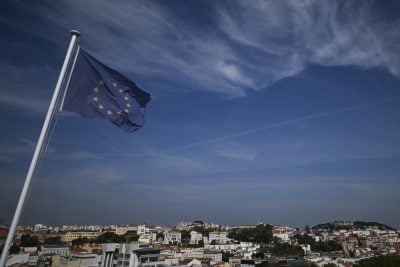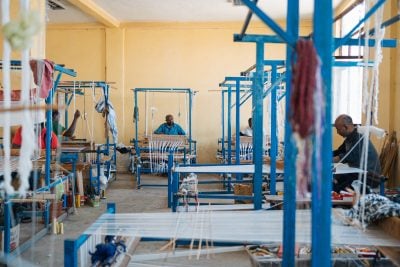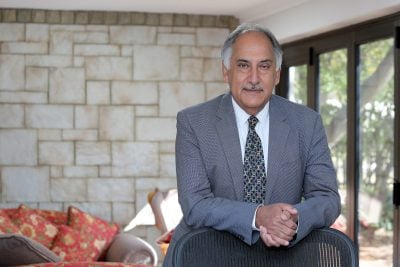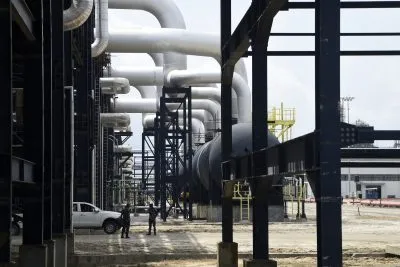Despite a breakthrough agreement at the November Cop27 climate summit at Sharm El-Sheikh in Egypt to establish a climate change loss and damage fund for developing nations, African leaders are continuing to demand an overhaul of the current climate financing architecture so that the continent’s adaptation and mitigation needs can be met.
Speaking at the African Economic Conference (AEC) in early December, Kevin Urama, chief economist and vice president of the African Development Bank (AfDB), said that the structure of global climate financing makes it much harder for developing nations deemed as “high risk” to obtain funding.
“We know that climate change is a risk accelerator for countries, so the physical risks of climate change increase the risk profiles of these countries that are more vulnerable to climate change, and we also know that risk aversion will not allow climate finance to flow to climate-vulnerable countries. So, by design, it is misaligned with the goals that we have set in terms of reversing climate vulnerability and risks,” Urama said.
The conference, organised by the AfDB, the United Nations Development Programme (UNDP) and the United Nations Economic Commission for Africa (UNECA), saw key political, scientific, and NGO stakeholders discuss climate change-resilient financing for Africa after Cop27.
Funding gap
Africa contributes only 3% of global emissions but it is the world’s most vulnerable continent to climate change. Urama noted the huge shortfall in climate financing for Africa, which needs up to $1.6 trillion between now and 2030 if it is to implement its Nationally Determined Contributions. NDCs are agreed climate goals that each country has set in line with the 2015 Paris Climate Agreement to keep global warming to well below 2°C over pre-industrial levels – ideally below 1.5°C.
Since then, the NDCs have been revised to become more ambitious, and Africa will need $3 trillion if it is to meet these. But what the continent has received so far “is a far cry from that”, according to Urama. Between 2016 and 2019, African countries only received $18.3bn in climate finance, the economist said, resulting in a $108bn per year funding gap from 2020 to 2030.
At Cop27 in November, a historic agreement was struck to provide a dedicated fund to assist developing countries in responding to climate change “loss and damage”, as well as a transitional committee to make recommendations on how to operationalise the new funding arrangements at Cop28 next year. But loss and damage compensation is not a solution to the absence of adaptation and mitigation funding to help Africa prepare for the coming changes.
“Loss and damage is linked to adaptation and mitigation because it happens when efforts to reduce emissions are not ambitious enough and when adaptation efforts are unsuccessful or impossible to implement,” explains the World Resources Institute.
And in adaptation and mitigation, richer countries have fallen short. A previous commitment by wealthy nations to pay $100bn per year by 2020 to help developing countries adapt to and mitigate the impacts of climate change was not reached.
Private sector can do more
While governments are under pressure at the annual Cop meetings to deliver more support, the private sector could be providing much more funding, say critics. Hanan Morsy, chief economist and deputy executive secretary at UNECA, said the private sector contributed a meagre 14% of all of Africa’s climate financing needs, much lower than Asia and Latin America, where it ranges between 40 and 50%.
Two main factors causing this share to be low, she said, were the bankability of projects and the risk perception of the continent. UNECA held regional roundtables with African countries in the run-up to Cop27 to look at green projects to match the supply and demand with potential investors.
“It has been a very useful exercise, not just in terms of linking projects with potential investors, but also for the feedback that they receive in terms of how they can improve the project design and structure to make it more attractive and bankable has been key,” Morsy says.
“In general, Africa pays a premium [for financing] relative to other countries with the same fundamentals – up to 250 basis points [2.5%] higher — and this also impacts the private sector,” she said, adding that this adversely impacts appetite on the continent.
She said Africa’s risk perception differs between investors but generally, for existing investors, the key impediments are mostly infrastructure-related. For prospective investors, it’s usually related to socio-political stability, Morsy said. The economist stressed the need to bridge that gap.
“Even though actually if you look on a project basis, we [Africa] have one of the lowest default rates – at 5.5% relative to other regions of 8% and higher. So here, there is also the issue of perception.”
This can be addressed by enabling cheaper financing through blended finance and having de-risking mechanisms, including guarantees, critical enhancement tools and equity investment, Morsy said.
“That’s why the role of multilateral development banks (MDBs) is really key, because they can really help with all these issues, and that’s why we have been calling for better recapitalisation of these MDBs.”
UNECA has also been calling for the re-channelling of the International Monetary Fund’s special drawing rights – international reserve assets that the IMF uses to supplement the official reserves and improve the liquidity of its member states – through MDBs to better favour African countries.
The 54-member UN arm is also calling for better utilisation of MDB capital to take on more risk in line with the G20 report on capital adequacy framework for entities. The official version of that report by the Group of 20 major economies was made public in July. It said that MDBs would be able to unleash hundreds of billions of dollars of funding if they took on calculated new risk.
Loss and damage fund not enough
At Cop27 in Egypt in November, there was some progress for African countries but much more will be required, said the delegates in Mauritius. Morsy hailed the loss and damage fund as “a very positive and welcome step”, but said a mechanism needed to be established about how the money gets dispersed and spent.
Raymond Gilpin, UNDP Africa’s chief economist, said the establishment of the fund was “better than nothing, but it doesn’t speak to the issue”.
“The issue for Africa today is: how does Africa source financing that is available and competitively priced, to ensure that the infrastructure required to facilitate a just transition is taken on board,” Gilpin told African Business. “And that has to include blended finance, it has to include de-risking. It also has to include aspects of concessionality in financing.”
Gilpin said financing has to be long-term. He conceded that “better than nothing” was not the most charitable way to describe the fund’s establishment, but there “really is no consensus” about what is actually lost and damaged. “So even if I do qualify, then for how much? It’s great, but I think that much more could have been done,” he said.
As well as defining loss and damage, African countries must also provide evidence of it being linked to climate change, Youba Sokona, vice-chair of the Intergovernmental Panel on Climate Change (IPCC), said.
“We need to do our homework. The homework is to provide a basis, an evidence-led basis on what we claim as loss, what we claim as damage,” Sokona told African Business, adding that it would give more climate-vulnerable countries a stronger position at the negotiation table.
Not understanding the urgency
The climate emergency is already impacting many African countries. Millions of people in northwest Kenya face starvation after the region suffered its worst drought in four decades in September, with scores of crops and livestock being wiped out by the extreme heat. The last four rainy seasons have been much drier than expected and have forced 1.5m in the region to flee their homes in search of food and water elsewhere.
Winnie Cheche, a Kenyan climate activist who attended the AEC, said the first instalment of loss and damage funding should have been committed at Cop27.
“It matters that they acknowledged it but it keeps being postponed and you see we already have people suffering. If you have been following the news, people are living in drought and everything. We have lost lives; people have lost livestock. You know it is dire when you get a community where someone is not able to bury their cattle. They just die in the heat and are left on the ground.”
Cheche said that these communities “don’t have another Cop to negotiate.”
“I believe if they [richer countries] would really see the urgency of the need [for financing], they would write the cheque because I believe the funds are there. But the fact that people don’t really see how serious it is, or think ‘why should I bother to give’ is hindering everything.”
Want to continue reading? Subscribe today.
You've read all your free articles for this month! Subscribe now to enjoy full access to our content.
Digital Monthly
£8.00 / month
Receive full unlimited access to our articles, opinions, podcasts and more.
Digital Yearly
£70.00 / year
Our best value offer - save £26 and gain access to all of our digital content for an entire year!
 Sign in with Google
Sign in with Google 



